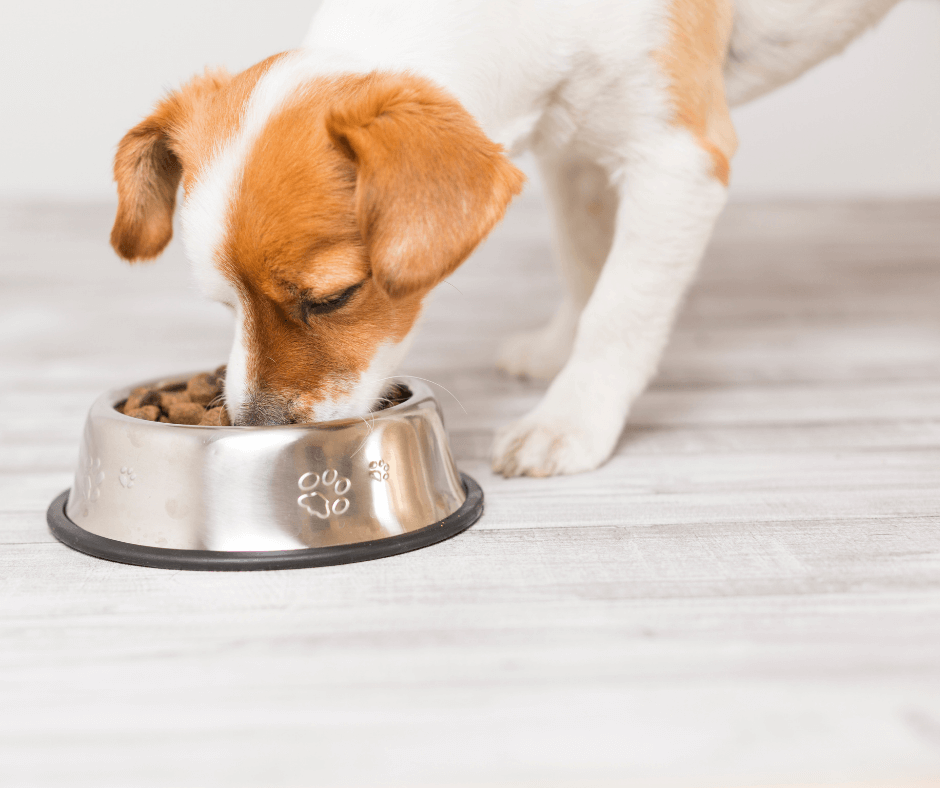How to Transition Your Dog to a New Food

Continual research and innovation gives dog guardians greater access to better nutrition for their dogs. Loving dog guardians will sometimes discover cleaner and healthier food to meet their dog’s dietary needs. But changing your dog’s diet should not be rushed. Here, we look at how to transition your dog to a new food.
From Wolf to Dog
Dogs have evolved through domestication from the wolf, but a wolf’s stomach is not designed to eat anything too far from just meat and fats. According to Erik Axelsson of Sweden’s Uppsala University‘s Department of Medical Biochemistry and Microbiology, the analysis of dog and wolf genes reveals dogs’ stomachs have evolved to tolerate more than animal protein and fats.
Although animal protein and fats should be major constituents of a dog’s diet, they will thrive on the inclusion of vegetables and they can digest some starch. Ideally, a dog’s meal should consist of animal protein, healthy fats, vegetables, water. It should be grain free and of course free of artificial colours, preservatives and flavours. Read How Much Should You Feed Your Dog?
Avoid Upset Tummies
The introduction of a new food can cause stomach upset and digestion problems. A slow transition will prevent these issues. Veterinary professionals recommend a gradual transition to the new food over a 7-14 day period. This may sound far fetched, but in order to make it a success, it is important that you are prepared to take your time.
Transitioning to a new food is an easy process, and your pup’s tum will thank you for it. The idea is to introduce a small percentage of the new food with the old food, and gradually increase this portion of new food a little at a time. Monitor your dog, and watch their toilet habits. It may take some dogs longer than others to adapt.
Prepare to Take a Step Back
Softer stools indicate a dog’s tummy isn’t too happy, but things should firm up. Give it another day before increasing the new food portion. Runny stools or diarrhoea mean a dog’s stomach isn’t coping with the change. Scale back the new food and ensure your dog has plenty of fresh water to drink. Once things firm up, try increasing it again. If diarrhoea continues and your dog seems unwell, take them to your veterinarian. Your dog may have a food intolerance or allergy, or may have become unwell due to an entirely unrelated cause, such as an illness or ingested toxin.
Transition Plan
A simple transition involves mixing your dog’s current food in with their new food, and gradually increasing the new food over a 7-14 day period. We recommend this formula.
- Day 1-2: 75% old diet + 25% new diet
- Day 3-5: 50% old diet + 50% new diet
- Day 6-7: 25% old diet +75% new diet
- Day 8: 100% new diet
Start introducing your dog to their new food in small amounts. These first couple of days will primarily consist of their current food mixed with a small amount of their new food. If it is well tolerated, go ahead and increase it to 50-50.
Continue increasing the percentage of new food until you are feeding the new food exclusively. Once that is well tolerated, you have successfully completed switching your dog’s diet!
Go With the Flow
This simple formula is easy to follow, however the key to good diet transition is closely monitoring your dog’s individual response, and be ready and willing to reassess and take it slower.
If at any point during the transition your dog displays any signs of stomach upset, changes in appetite and diarrhoea you should proceed more slowly. Perhaps add an extra day or two to each stage of the above suggested transition. It can take some dogs a lot longer than others to adapt to a new dog food.
